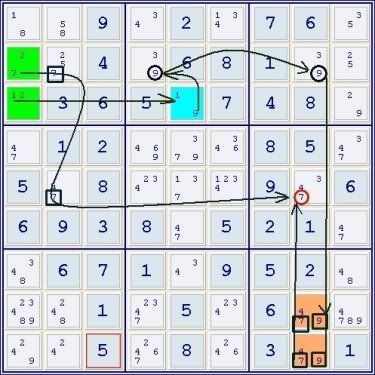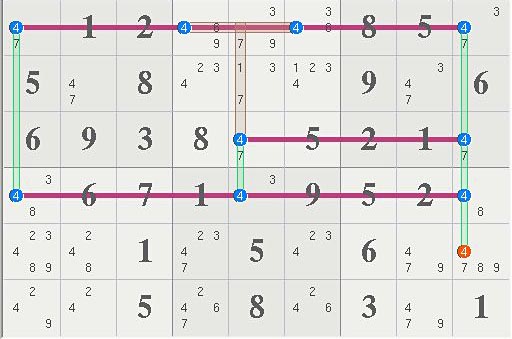Don, you purporting expert, when the terminology becomes a strait-jacket, I too am in favour of moving on.
But back to your original post above.
A word on the hidden set view of things : they point straight at their targets, and the targets are at close range. Which is why I regard this as a simple approach.
Simpler and arguably better than "simple" chains by which I mean those which start on a single candidate (xr1c1=...)
For a reason which could even appeal to you : they are closer to "Pattern A" solving : why ? because the latter shall we say hope to catch a candidate in a pincer movement, and any candidate will do, whereas hidden set chains know exactly what targets they have in mind.
So when a "Pattern B tending towards A" is staring you in the face, is it preferable to construct a Pattern A ? Let that be a rhetorical question.
Take now your example :

Look at 479r89c8 : 7r5c8 looks like a natural target (which doesn't mean that it will turn out to be one).
The logic :
either r89c9 is the hidden pair 47, or there is a 9 in r89c9.
If it is the pair, the case is closed : <7>r5c8
If it isn't, then a little chain with 9 soon places 7 in r5c2.
For variety as compared to your steps :
9r89c8-(9=3)r2c8-(3=5)r1c9-(5=8)r1c2-(8=24)r89c2-(4=7)r5c2 : <7>r5c8
That reasoning is then combined into one chain :
47r89c8=9r89c8-(9=3)r2c8-(3=5)r1c9-(5=8)r1c2-(8=24)r89c2-(4=7)r5c2 : <7>r5c8.



